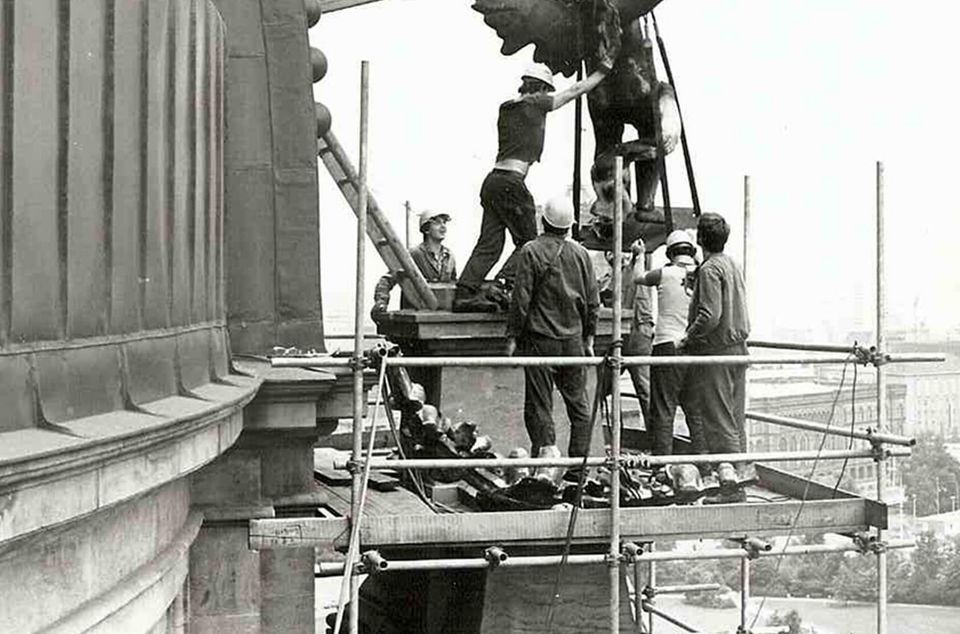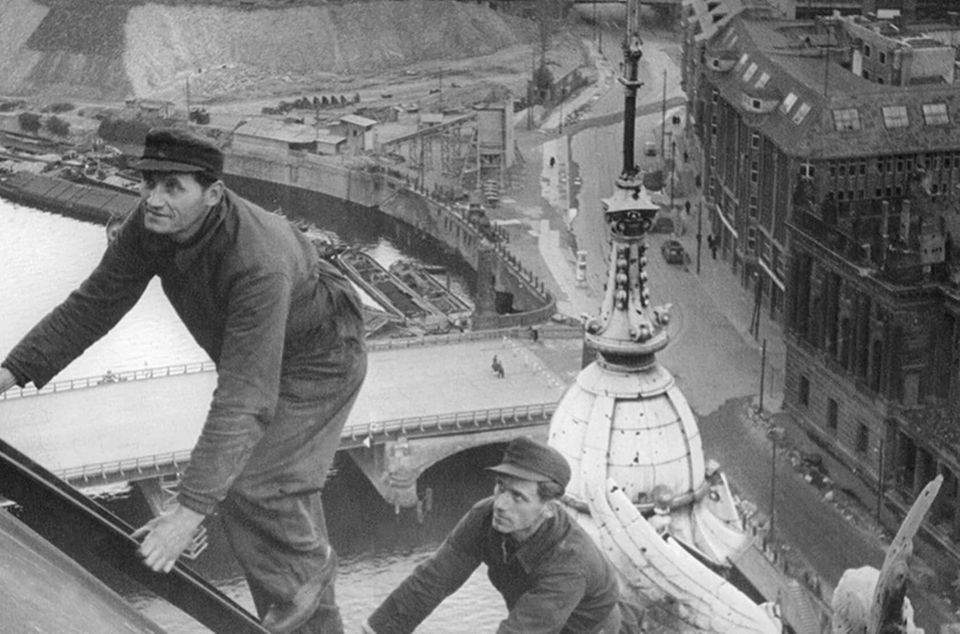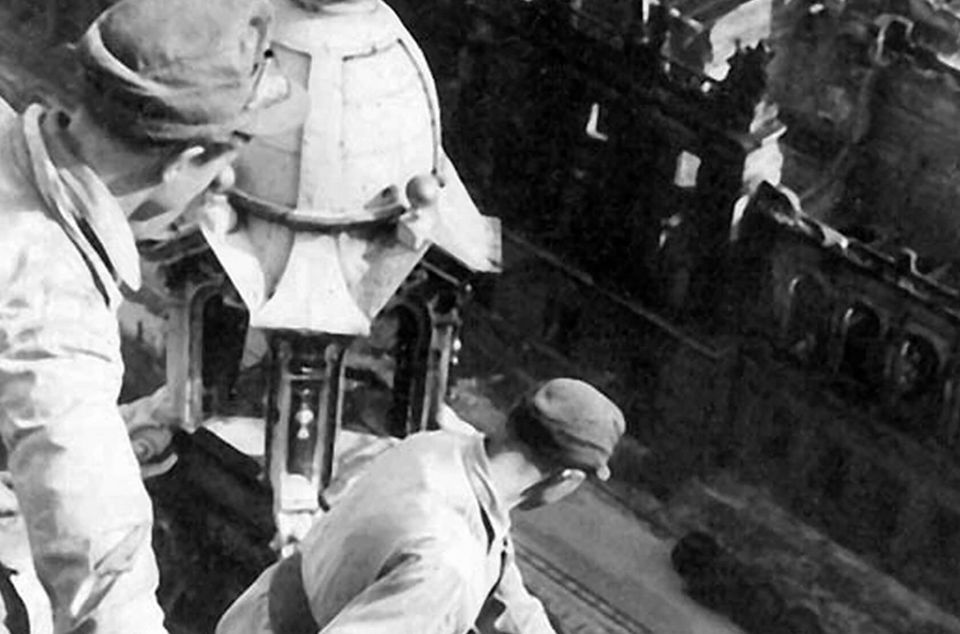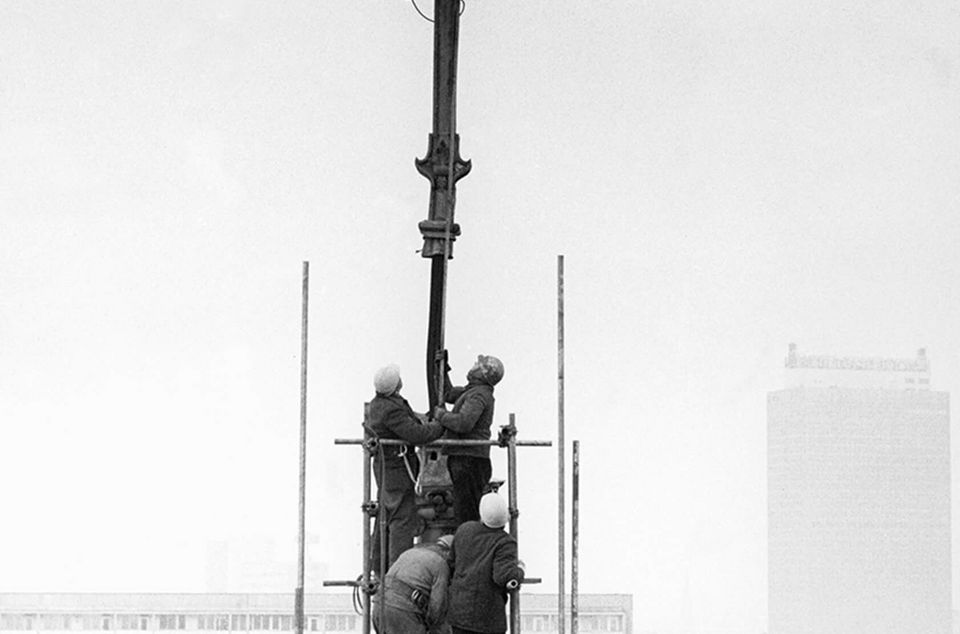GDR period and reconstruction

As early as December 1940, the blast from a British air raid on Berlin had destroyed the precious altar windows designed by Anton von Werner, as well as all other Cathedral windows. The western and eastern façades were also damaged. The stoker Paul Scheffel was killed in this attack. On 24 May 1944, a bomb hit the dome lantern, setting fire to it and the entire outer dome. The lantern construction’s collapse under its own weight subsequently smashed the inner stone dome, plunging it into the Sermon Church where it smashed through the church floor before finally breaking open the precious coffins in the Hohenzollern family crypt.
The Memorial Church (Denkmalskirche) and the four towers were also affected by the attack. The Cathedral was transformed into a ruin in just one night. In February 1945, the side of the building facing the river Spree suffered further damage as it came under heavy fire.
By the end of the Second World War, 25 percent of the Cathedral had been destroyed. In order for services of worship to be held at all, the Cathedral parish separated a section of the Hohenzollern family crypt beneath the Memorial Church left half standing, and used this so-called ‘Tomb Church’ as a place of worship.
Reconstruction was extremely difficult due to the lack of finance, materials and professionals. In the years that followed the War, work was undertaken to construct and secure the roofing, and to eliminate sources of potential danger. It was not until 1952/53 that, with the assistance of the City of Berlin and the church authorities the 20 metres wide hole above the Sermon Church was sealed with an emergency dome. However, the majority of the seven mosaics depicting the beatitudes of the Sermon on the Mount had, at this point in time, been lost due to wind and weather, which had penetrated the edifice without any resistance. Some of the administrative rooms, of which several had been let out to the Faculty of Theology at the Humboldt University, were also able to be saved. It was then finally possible to use the Baptismal and Matrimonial Church (Tauf- und Traukirche) for worship on a provisional basis.
In the GDR the Cathedral’s existence was the subject of repeated dispute. A demolition like that experienced by the castle in 1950 was always on the cards. Following lengthy and extensive negotiations, an agreement was finally reached between the government of the GDR, the Federation of Protestant Churches in the GDR and the churches in the Federal Republic of Germany, which provided for the reconstruction. This initially began in 1975 with the demolition of the Memorial Church and the Imperial Underpass, a loss that continues to have an effect until this very day. Reconstruction of the outer layer in its historical shape was completed in 1984. However, the dome landscape, which had been a source of great dispute among architects since the Cathedral’s construction, was given a new and relatively austere appearance in keeping with the times. The Baptismal and Matrimonial Church was given the so-called Door of Reconciliation in accordance with designs by the artist Siegfried Krepp – the only contemporary piece of art in Berlin Cathedral, the design of which caused a significant amount of controversy.
The interior of the Baptismal and Matrimonial Church had already been handed over to the congregation for worship in 1980. The expansion of the Sermon Church’s interior and other rooms then followed. Berlin Cathedral was finally able to be re-inaugurated during a celebratory service on 6 June 1993 with the participation of numerous prominent guests in what was now a unified Germany. The fact that the building could be resurrected into what is essentially its historic form is attributable in no small way to Rüdiger Hoth, who oversaw the Cathedral's reconstruction from 1975 onwards, initially in a role as the church’s construction representative, and then later as the Cathedral's master builder.



